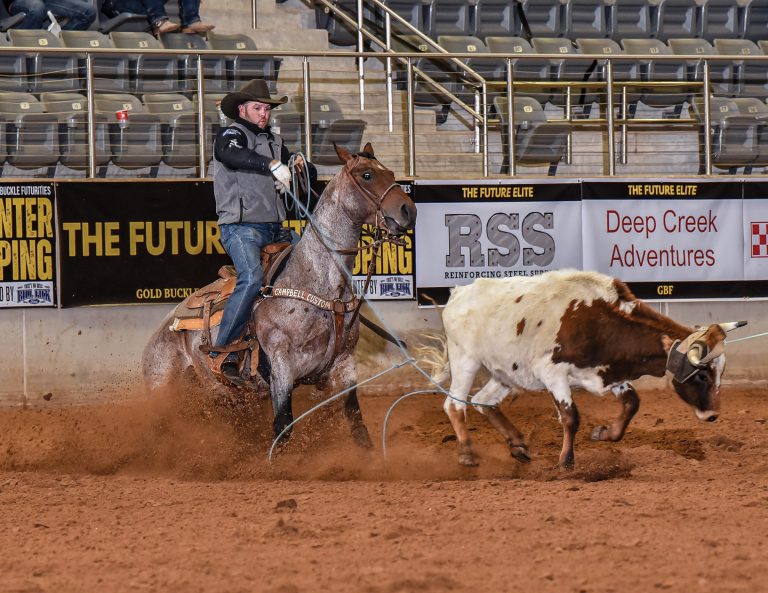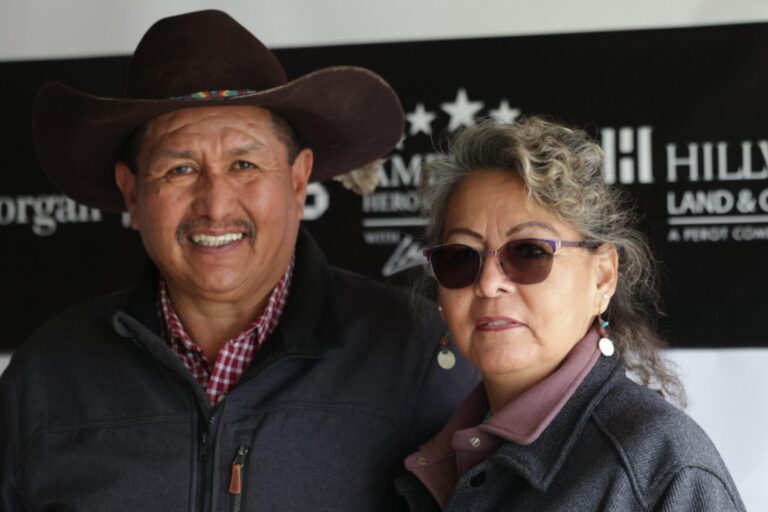In our program, from 3-year-olds to finished horses, we spend most of our week in circles. We do that to keep our horses thinking about a curve to the left, in the left lead, opening up our shot as a heeler. We want our horses softer through their shoulders, and the circle creates that.
1) Wait
The first thing that happens for a lot of people is that the dummy starts moving, and their horse just takes off—and someday, that will translate into what happens in the box. I want my horses waiting on me behind the dummy. I make them to wait until I ask them to follow and, if I want to walk behind it first, I walk. I’m controlling the speed and the direction, and I remind my horse to be soft to my inside leg as we’re tracking. I’ll ask her to stop, and I’ll back a few steps to reinforce the stop and, sometimes, bring her nose around with the inside rein to just reinforce that softness.
READ MORE: Building Confidence in Young Horses
2. Small circles

Making a small circle behind the dummy without a rope, we trot in behind the dummy (as the dummy is already in motion) and two-track our horses a little bit as we go. “Two-tracking” means moving their shoulders as they go, without babysitting. We don’t want to be holding their faces, micromanaging them, because if you’re doing that at the 3-year-old stage, you’ll be doing that their whole careers. So the second piece of that is to have them reading our seat. After trotting behind the dummy part of the circle, we’ll ask the horse to stop with our seat to instill rate. As we progress, we’ll ask the horse to follow the dummy longer, making a slightly bigger circle. From ground zero, we want these horses to buy into this program.
3. Reading seat cues

When we’re roping, our hands are tied up—we’re riding with one hand. Our body isn’t doing exactly what the horse can read, so we want them really reading our seat. As 2-year-olds, we get the horses to really back off with our body and our seat, and this drill starts this process on the dummy. We’ll do this throughout the whole process of training a heel horse. Great heel horses keep this curve throughout their corner to really open up the shot.
READ MORE: Are You Causing Your Horse to Drop His Shoulders?
4. Maintain a soft mouth

A lot of top guys going up and down the road will throw off the separation of their hands. But if I start pulling now, I’m going to have to pull hard on her forever. So, the reading of the seat is so important because it keeps me from building a tougher-mouthed horse from the get-go.
5. Back to the circle

This process will start as a 3-year-old, but it stays the same throughout the horse’s whole life. If the horses have a problem as they progress, we’ll just go right back to the circle. If you want to fix your horse as a heeler, you might only have four or five jumps across an arena behind a steer, because they don’t have time to settle in position. But, behind the dummy in a circle, I can continue to track until she feels confident. Sometimes, you have to until they settle. The circle is a place to make adjustments for the rest of the horse’s life. TRJ











